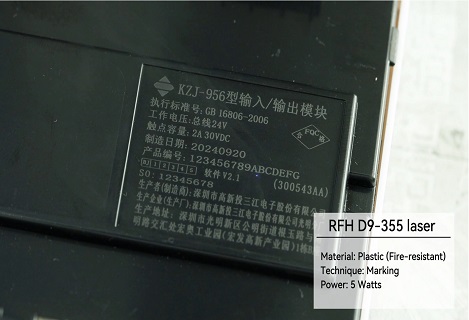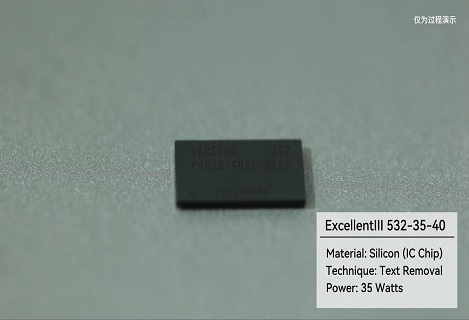
How is UV nanosecond laser antifreeze? RFH has suggestions
Website: http://www.rfhtech.com
Whatsapp(Wechat): 18928466502
Email: export06@rfhlasertech.com
Seeing that many cities in the north have ushered in snowflakes, the cold wave has entered, and all places have begun to accept this wave of cold air.
Facing the increasingly cold weather, it is also a challenge for water-cooled lasers. The optimal working temperature of the laser is around 22°C, and the low temperature cannot be lower than 5°C. If the temperature is too low, the cooling water inside the water-cooled laser will freeze, which will cause damage to the laser or even be directly scrapped.
Winter is coming, pay attention to the icing problem of 355nm UV laser coolant
What happens when the coolant freezes?
01
Icing ruptures cooling lines
When the internal cooling water of the laser freezes, the internal cooling pipeline will break the water pipe and leak due to the expansion of the cooling water. The leakage will also cause problems such as damage to electrical components and optical device contamination and damage, resulting in the scrapping of the laser. repair. Some optical components that are in direct contact with cooling water will also freeze and crack due to water freezing, such as the quartz tip of an optical fiber.
02
Icing deforms the cavity
Icing inside the laser will squeeze the resonant cavity and optical circuit devices of the laser, resulting in irreversible deformation and displacement. This will cause the laser output power to drop and the spot pattern to be abnormal. In more serious cases, the laser will not be able to emit light.
【Antifreeze Tips】How to make the uv laser survive the winter safely?
01
Raise the ambient temperature
Most lasers require an ambient temperature higher than 5°C, and installing air conditioners or other heating facilities to ensure that these facilities can operate continuously and safely can effectively prevent the inside of the laser from freezing.
02
Keep the water cooler running continuously
If the laser is in a short-term shutdown or standby state, please keep the water cooler running continuously, and the continuous flow of water will also delay the freezing to a certain extent (the ambient temperature needs to be kept higher than the freezing point temperature).
03
Drain the coolant
If the laser needs to be shut down, stored or transported for a long time, it is necessary to ensure that the coolant in the laser pipeline is drained. Blowing clean oil-free compressed air or nitrogen from the water inlet can effectively drain the residual coolant in the pipeline.
The pressure of compressed air or nitrogen needs to be kept within a certain range. Too high pressure will easily cause damage to the pipeline. Some laser water connections use self-locking quick-plug joints, please use the original quick-plug joints to open the self-locking device for liquid drainage.
What if the cooling water cannot be guaranteed to be drained daily?
If the production environment often encounters power outages, the water chiller cannot continue to operate, and the cooling water cannot be guaranteed to be drained every day, so at this time, it is necessary to choose antifreeze to replace the cooling water.
How to choose antifreeze?
There is only one basic principle for choosing antifreeze, which is slightly lower than the local minimum temperature. As for the brand, it can be selected according to the recommendations of different laser machine manufacturers.
(Note: The antifreeze is not the lower the freezing point, the better, it should be selected reasonably according to the local temperature)
There is a point to note, antifreeze can not replace cooling water (ionized water), after the cold winter, to replace the traditional cooling water for long-term use.
RFH Laser Alert:
If the laser has frozen,
Please contact the company's engineers for processing as soon as possible.
Avoid surprises and further losses!
uv laser | green laser | Ultraviolet lasers | uv dpss laser | nanosecond laser | UV laser source | Solid State Lasers







































